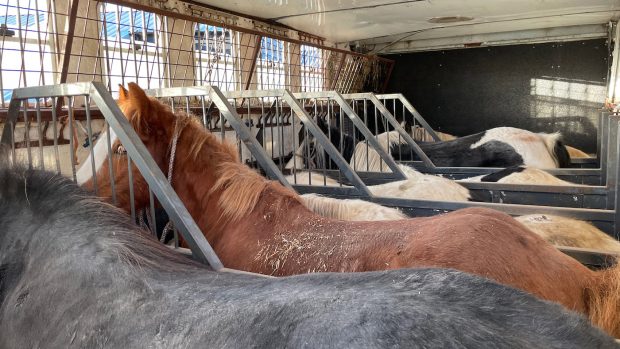WORLD Horse Welfare has submitted a large file of evidence to the European Commission in support of changes it is requesting to the laws governing the long distance live transport of horses for slaughter.
The file draws together 7 years’ worth of desk research by the charity, scientists and vets with evidence gathered on field trips. But it is underpinned by a pioneering scientific study into the health and welfare of horses travelling across Europe and arriving in Italy carried out by a team of vets on behalf of World Horse Welfare this summer.
David Marlin, who spearheaded the project, told H&H: “It’s clear from looking at the data that transporting a horse for slaughter is just about the worst thing you can do.
“Unlike transporting cattle and sheep commercially, horses have a greater risk of injury and don’t come off so well psychologically.”
He said the charity’s research confirms that transporting a horse will exacerbate any problems — from lameness to respiratory disease — in any equine from racehorses and sport horses to slaughter horses.
He added: “And the less care you take and the further you go the more problems you’re going to have.”
World Horse Welfare has submitted with its dossier of evidence a list of 8 recommendations for change to the current legislation to improve the welfare of horses transported for slaughter in Europe. It has also called for better enforcement — H&H witnessed first hand the overt flaunting of the rules on a field trip in July.
“The European Commission asked us for hard data as evidence for recommendations for change, and this is what they’ve been given,” said the charity’s director of campaigns, Jo White
Ms White and her colleagues submitted the file to the EC in Strasbourg on Tuesday (18 November), where it will now be considered by veterinary advisors.
Key points discovered this summer
- 26% of horses arriving in Italy for slaughter were obese
- One in three horses arriving in Italy had cuts that resulted directly from transport
- 471 of 1271 horses arriving in Italy were considered unfit for transport — double the number leaving Romania
- 90% of horses arriving in Italy considered unfit for transport had more than one clinical sign of disease
- Only one third of horses transported to Italy for slaughter had access to water prior to their journey
- Horses lose on average 0.36% of their body weight per hour, so it would take 14 hours of transport for a horse to become severely dehydrated.
- Vets saw a high level of resistance in horses to loading (63%) and unloading (66%)
Recommendations for changes to EU regulation
- Horses are reclassified separately from farm animals
- Short, finite journey times to be imposed — maximum 12 hours, with feed and water corresponding with driver rest breaks, every 4.5hours
- Minimum space allowance to be made, with separate set distances between horse and partition for large horses, heavy framed ponies, light-framed ponies, unbroken horses and mares and foals
- Partitions to be defined — full length, to the floor, of a rigid construction and padded material with no sharp edges or metal, wood or plastic surfaces. Ideally positioned in herringbone pattern.
- New definition of unbroken to be agreed — “equidea that cannot be tied, led by a halter, loaded, unloaded, partitioned and/or transported without causing undue excitement, stress, pain or suffering”
- There is strict enforcement of regulations
- Detailed records and journey plans to be kept, verified by GPS and cross-referenced
- Compulsory 24-hour rest to take place, off the vehicle, with access to feed and water immediately on entry to the EU on health and welfare grounds
www.worldhorsewelfare.org




